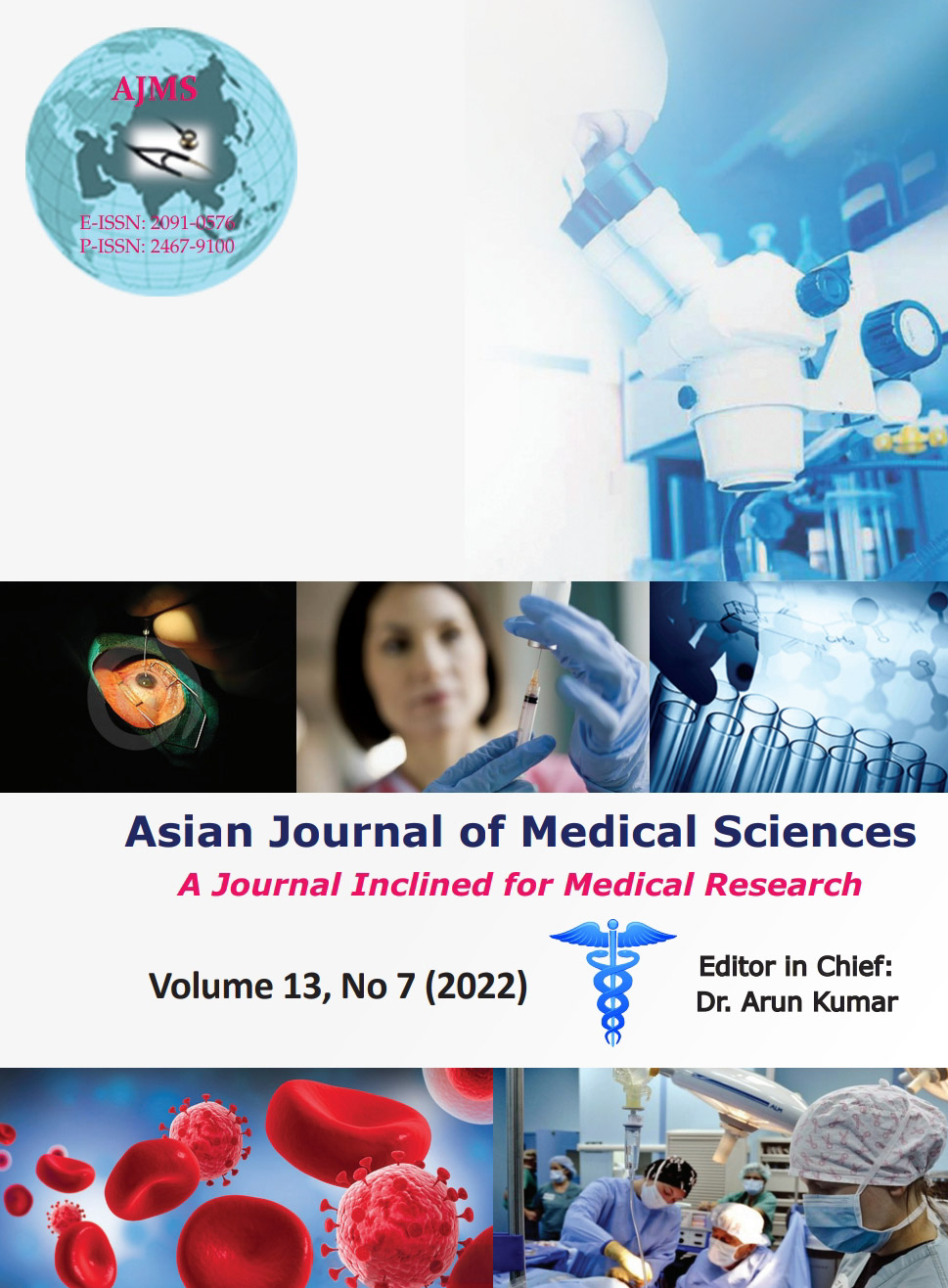Pattern of ossicular chain involvement in chronic suppurative otitis media
Keywords:
Atticoantral, Chronic suppurative otitis media, Incus, Malleus, Ossicles, Stapes, TubotympanicAbstract
Background: Chronic suppurative otitis media has been acknowledged as a conspicuous pathology affecting the middle ear since times immemorial.
Aims and Objectives: The aim of the study was to study the incidence of ossicular involvement and various patterns of its presentation in chronic suppurative otitis media.
Materials and Methods: With the objective to study the incidence and pattern of ossicular involvement in chronic suppurative otitis media and also to correlate the various ossicular defects with the type and extent of the disease, we decided to take up this study at our institute. The study involved a total of 100 patients between February 2020 and June 2021.
Results: Among the 100 patients included in this study, there were 56 males and 44 females. Among the 100 patients in this study, there were 54 tubotympanic and 46 atticoantral chronic suppurative otitis media patients. Among the tubotympanic cases, ossicular involvement was discovered in 18 cases while 36 cases were without any ossicular involvement. Among the atticoantral cases, 38 cases had ossicular involvement while eight cases had no ossicular disruption. Out of the 56 cases that showed ossicular involvement, incus was involved in 52 cases, malleus was involved in 14 cases, and stapes was involved in 10 cases.
Conclusion: Ossicular involvement was seen in 53% of the operated cases of chronic suppurative otitis media. Atticoantral disease is 3 times more prone to having ossicular erosion than tubotympanic disease. Wet ears have 6 times more likelihood of having ossicular involvement in comparison to dry ears. Incus is the most common ossicle involved followed by malleus and stapes. Erosion of the incudal long process is the most common abnormality. Incus is invariably involved in atticoantral disease. Stapes involvement in the form of resorption of the arch of stapes is the most common pattern. An eroded long process along with stapes arch resorption is the most frequent ossicular chain defect.
Downloads
Downloads
Published
How to Cite
Issue
Section
License
Copyright (c) 2022 Asian Journal of Medical Sciences

This work is licensed under a Creative Commons Attribution-NonCommercial 4.0 International License.
Authors who publish with this journal agree to the following terms:
- The journal holds copyright and publishes the work under a Creative Commons CC-BY-NC license that permits use, distribution and reprduction in any medium, provided the original work is properly cited and is not used for commercial purposes. The journal should be recognised as the original publisher of this work.
- Authors are able to enter into separate, additional contractual arrangements for the non-exclusive distribution of the journal's published version of the work (e.g., post it to an institutional repository or publish it in a book), with an acknowledgement of its initial publication in this journal.
- Authors are permitted and encouraged to post their work online (e.g., in institutional repositories or on their website) prior to and during the submission process, as it can lead to productive exchanges, as well as earlier and greater citation of published work (See The Effect of Open Access).




